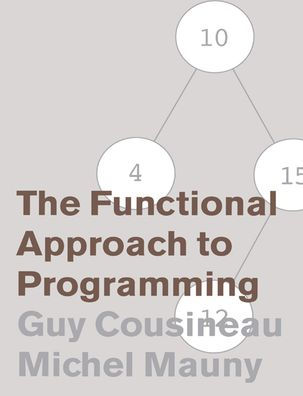The Functional Approach to Programming
A programming course should concentrate on a program's logical structure and design rather than on simply writing code. The functional approach to programming achieves this aim because logical concepts are evident and programs are transparent, and so can be written quickly and cleanly. In this book, the authors emphasize the notions of function and relate programming to familiar concepts from mathematics and logic. They introduce functional programming via examples but also explain what programs compute and how to reason about them. They show how the ideas can be implemented in the Caml language, a dialect of the ML family, and give examples of how complex programs from a variety of areas (such as arithmetic, tree algorithms, graph algorithms, text parsing and geometry) can be developed in close agreement with their specifications. Many exercises and examples are included throughout the book; solutions are also available. An appendix gives all the code used in the book in Standard ML.
1100960011
The Functional Approach to Programming
A programming course should concentrate on a program's logical structure and design rather than on simply writing code. The functional approach to programming achieves this aim because logical concepts are evident and programs are transparent, and so can be written quickly and cleanly. In this book, the authors emphasize the notions of function and relate programming to familiar concepts from mathematics and logic. They introduce functional programming via examples but also explain what programs compute and how to reason about them. They show how the ideas can be implemented in the Caml language, a dialect of the ML family, and give examples of how complex programs from a variety of areas (such as arithmetic, tree algorithms, graph algorithms, text parsing and geometry) can be developed in close agreement with their specifications. Many exercises and examples are included throughout the book; solutions are also available. An appendix gives all the code used in the book in Standard ML.
99.0
Out Of Stock
5
1

The Functional Approach to Programming
460
The Functional Approach to Programming
460Paperback(ENGLISH ED)
$99.00
Related collections and offers
99.0
Out Of Stock

Product Details
| ISBN-13: | 9780521576819 |
|---|---|
| Publisher: | Cambridge University Press |
| Publication date: | 10/29/1998 |
| Edition description: | ENGLISH ED |
| Pages: | 460 |
| Product dimensions: | 7.44(w) x 9.69(h) x 0.94(d) |
From the B&N Reads Blog
